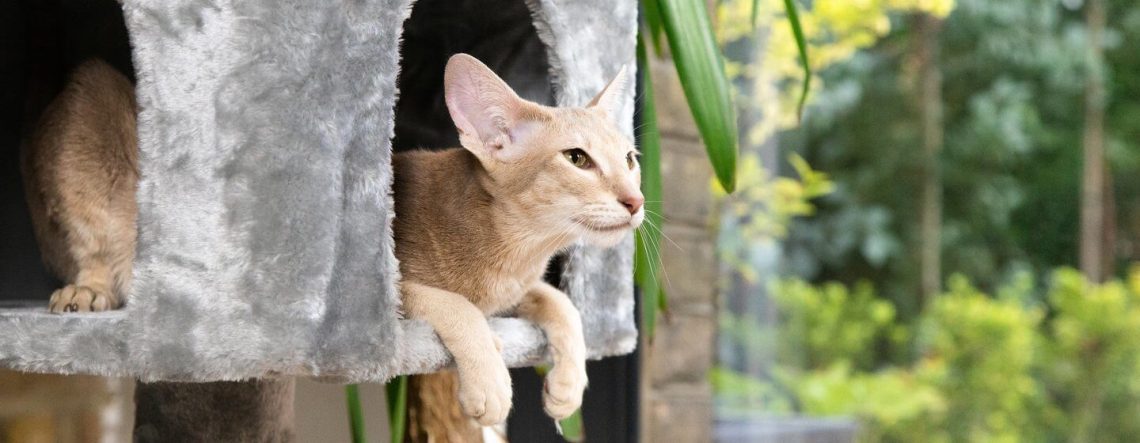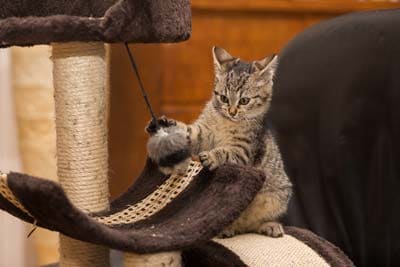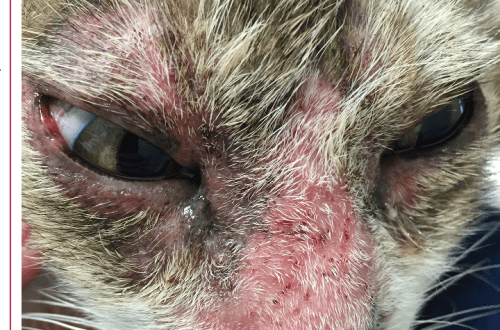
10 easy tips to keep your home safe from a kitten
Have you adopted a kitten? It’s important to keep your home safe so your new furry friend doesn’t bite, eat, or scratch anything that isn’t meant to be. If you get an adult cat, it will probably be less mischievous, but in any case, it is necessary to provide ways to protect the furniture from such a tenant. Here are some tips to keep your home safe when a cat or kitten arrives.
Contents
- 1. They love to touch and chew.
- 2. Not all plants are useful.
- 3. Close the toilet lid.
- 4. Hot spots are not safe.
- 5. Protect your furniture from cat claws.
- 6. Take care of the inaccessibility of places prohibited for a cat.
- 7. Check small spaces.
- 8. Attach all mosquito nets to windows.
- 9. Stock up on his favorite toys.
- 10. Be patient when creating a safe home for your cat.
- Erin Ollila
1. They love to touch and chew.
Kittens are in many ways similar to our children: they learn about the world around them with their eyes, hands (that is, paws) and mouth. Regardless of their age, cats are playful animals with an innate love to grab everything around and play with whatever they can find on the floor. The latter is extremely important: you think the floors are clean, but if you get down on the floor, you are likely to find items that could be a problem for your kitten.
Here’s what you should look for and remove from under sofas and shelves before bringing a kitten home:
- Threads.
- Ropes
- Scrunchy.
- Ribbons.
- Stationery rubber bands.
- Plastic bags.
- Items for sewing.
- Doll/toy supplies.
- Small details from board games.
- Erasers
A kitten can easily find and swallow scattered objects, and there are many other things in your house that he will try to chew on, including wires. Tape off any wires that can’t be removed from your kitten’s reach, even if they are constantly used for devices that need to be moved with them. If you are temporarily using household appliances such as an iron, its dangling cord can also be quite tempting for a kitten. He may think that the cord can be played with, but if he drops the iron from the ironing board, he may be seriously injured.
In addition to electrical cords and cables, you also need to protect telephone wires, curtain ties, and blind cords that only seem safe. Keep these items in mind as you prepare to make your home kitty-safe!
2. Not all plants are useful.
Houseplants add a bit of wildlife to your home, but be careful about letting your cat near them. Philodendron, lilies, mistletoe and spurge are some of the most toxic houseplants, which, with constant contact, can cause serious illness in your crumbs. Lilies, azaleas, and daffodils are common garden plants that are also toxic to kittens. It’s important to check and make sure any cut flowers you bring into your home are safe for curious eared babies.
3. Close the toilet lid.
Cats and kittens are always on the lookout for water to drink during the day. The most accessible place is the toilet in the bathroom. It disgusts us, but not all cats are so squeamish, and if she wants to drink, there is always water there. So be sure to keep the toilet lid closed when you have a kitten in your house. After all, if you do not do this, your furry friend runs the risk of falling there and drowning. Are other lids closed in your house? Trash cans, washing machines, washer and dryer. You don’t want your kitten to fall into a trap and not be able to get out.
4. Hot spots are not safe.
Even though kittens love warmth, you need to make sure these comfort zones are safe. If the heat comes from a fireplace or a wood-burning stove, let the cat know that it is better not to sleep in these warm places. If necessary, make it more difficult for the cat to access these places by moving the objects along which she climbs to the heat, or wake her up after a while. Ultimately, make sure all trace heaters are unplugged and properly stored when not in use. If they are connected, always monitor the heaters so that your family is protected from overheating.
5. Protect your furniture from cat claws.
Cats and kittens love to scratch, but they don’t know when not to let out their claws until you teach them. The easiest targets for your little one’s claws are large pieces of furniture such as sofas or tables. Carpets and carpeted stairs can also be affected.

When trying to protect furniture from a cat in your home, think not only about what your kitten might scratch, but also about objects that he can climb on: curtains, long tablecloths, or bookshelves. Instead of these things, show the kitten a scratching post or a cat tree that can be scratched, and so he will know exactly which items belong to him.
6. Take care of the inaccessibility of places prohibited for a cat.
Cats are naturally curious, so a closed closet doesn’t mean your pet won’t want to get in. Consider purchasing lockers for cabinets that hold cleaning products or medicines. These items can be stored on the top shelf of the closet to make sure they are out of reach.
Remember that your cat can climb in there too, so the closet door itself must also be closed.
If there is a special room that the kitten is not allowed to enter, always keep it locked. Barriers for kids and dogs won’t stop a cat, which Mother Nature Network says can jump five times its own height. All souvenirs that are especially important to you and your family should be locked up or hidden. Did you get a vase – a special heirloom from a distant relative? Wrap it up for safekeeping and put it away until your pets are old enough to walk safely around such items.
7. Check small spaces.
Cats like to nestle in small, warm places. For example, before you close the dryer door, make sure your kitten doesn’t slip in to take a nap. The same goes for other quiet places like dresser drawers, pantry baskets, refrigerators and freezers.
8. Attach all mosquito nets to windows.
Kittens love the warmth of the sun and will snuggle up to windows to get as much natural warmth as possible. To ensure the safety of your kitten in your home, check all the screens on the windows and doors, even if it is winter outside. Also, don’t forget about it in the spring or summer when the kitten is already accustomed to its surroundings. If the mesh is loose, he may be in danger. For more protection, buy special anti-cat mosquito nets and the same blinds. Such mosquito nets are not only safer, but also last much longer than conventional ones, as they are more durable.
9. Stock up on his favorite toys.
The longer your pet is busy, the less likely a dangerous situation is. Kittens love to play, so don’t skimp on toys your kitty can play with when she wakes up. He will certainly love toy mice and balls with bells that make enough noise to let you know where he is during the day. Be prepared that the baby will either play with you or take a nap in your lap.
10. Be patient when creating a safe home for your cat.
Regardless of whether you adopted a kitten or an adult and wise cat, it will be difficult for them to immediately learn all the house rules. A cat may shy away from wires or scattered objects on the floor, but is happy to climb curtains or jump onto shelves. She may snort disdainfully towards her bowl and drink from the sink. Adjustment to a new home should be smooth, initially leaving her in a small cat-friendly space while she learns, and then slowly letting her into the rest of the house until she gets used to the rules. When allowing her to roam the house and explore new environments, be sure to keep an eye on her.
If she is drawn to places that may be unsuitable or dangerous for her, take the necessary precautions to ensure her safety. To create a safe environment, it is important to correct the kitten gently and calmly.
Finally, never punish a kitten or cat for misbehaving. They are still learning the rules of your house and don’t memorize everything all at once. Punishment can only make things worse, causing the pet to become tense and fearful. Proper training and rewards for good behavior will help him understand what can and cannot be done. If you notice that he is starting to become stubborn, just point him to toys or a scratching post. Your pet is learning and expects you to guide him. Be patient as with a small child who first knows this world – and your connection will be stronger every day.
Erin Ollila
Erin Ollila is a pet lover and graduate of Fairfield University with a Master of Arts degree in creative writing. Follow her on Twitter @ReinventingErin or visit http://erinollila.com.





